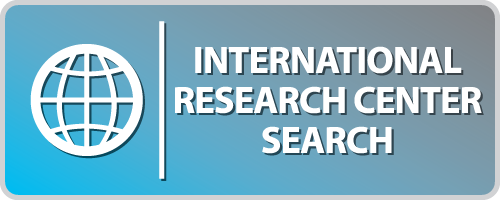The Center-to-Center (C2C) Mechanism at NSF’s Engineering Research Centers (ERCs)
The C2C international mechanism (which MUST be submitted as a SUPPLEMENT to the ERC Base Award) was piloted as a result of a trilateral Memorandum of Understanding (MOU) among three jurisdictions: United States of America (US), Republic of Ireland (RoI) and Northern Ireland (NI) which was signed in 2006 and first manifested in 2014. It provided supplemental funding for active ERCs to engage in trilateral collaborations with the RoI and NI.
After several successful C2C collaborations, the mechanism has been broadened to countries beyond Ireland. The mechanism of the partnership is based on a MOU that might be negotiated and signed by the involved governments, the involved funding agencies, or between the involved universities. The first test case collaboration of the expanded model involved an MOU between the NSF’s ERC for Power Optimization for Electro-Thermal Systems (POETS) and Research Center for Gas Innovation (RCGI), which were funded by NSF and the São Paolo Research Foundation (FAPESP), respectively. The collaboration was initiated by researchers from the U.S. and Brazilian centers seeking opportunities for overlapping research. Once they settled on possible projects, NSF and FAPESP became more actively engaged in discussions over the timing and amount of possible funding. POETS and RCGI then followed a 3-step process established for C2C trilateral collaborations, described below.
The overarching objectives of C2C collaborations are to:
- Augment existing capabilities of ERCs
- Share expertise and infrastructure
- Train graduate students and/or Postdocs
- Enhance engagement with industry
- Embrace convergent research to solve significant research goals and challenges
- Accelerate achievement of milestones at fundamental, enabling technology and/or testbed levels
- Facilitate achieving an ERC’s vision in scope, scale, and/or impact
- Convergent Quantum REsearch Alliance in TElecommunications (CoQREATE)
- o Center for Quantum Networks (CQN) - NSF
- o Republic of Ireland and Northern Ireland
- Agile Cloud Service Delivery using Integrated Photonics Networking
- Center for Integrated Access Networks (CIAN) - NSF
- CONNECT and Irish Photonic Integration Centre - SFI
- Computer Science Research Institute (CSRI) - DfE
- Energy and the Environment: Data-driven Reliability of Carbon-based Energy Conversion, Capture and Storage Systems
- ERC for Power Optimization for Electro-Thermal Systems (POETS) -NSF
- Research Center for Gas Innovation (RCGI) - FAPESP
- Partnership in continuous manufacturing methods for nano-based drug delivery platforms
- Center for Structured Organic Particulate (CSOPS) - NSF
- Synthesis and Solid-State Pharmaceutical Cluster (SSPC) - SFI
- Centre of Pharmaceutical Sciences - DfE
- Ultra-low Energy Electric Field Control of Non-volatile Magnetoelectric Memory Devices
- Nanosystems Engineering Research Center - NSF
- Advanced Materials and Bio-Engineering Research (AMBER) - SFI
- Centre for Nanostructured Media (CNM) - DfE
- Collaborative REsearch of Decentralised ElectrificatioN Communications and Economics (CREDENCE)
- Center for Future Renewable Electric Energy Delivery and Management Systems (FREEDM) - NSF
- Centre for MArine and Renewable Energy (MaREI) - SFI
- Energy, Power and Intelligent Control (IPIC) - DfE
- Bioresorbable Magnesium Alloy Systems for the Promotion of Regenerative Biological Function in Orthopaedic Implant Devices
- Center for Revolutionizing Metallic Biomaterials (RMB) - NSF
- Centre for Research in Medical Devices (CURAM) - SFI
- Nanotechnology and Integrated Bioengineering Centre (NIBEC) - DfE
| Example Model for C2C Collaborative Expansion |
The model for the C2C process presented here is the trilateral US-Ireland collaboration. When the Irish spelling is partially used for “Center-to-Centre”, we are referring to the US-Ireland collaboration. The American spelling “Center-to-Center”, refers to a broadening of original collaboration to include other countries. Instead of working at the State Department level to craft an MOU, it is expected that the expanded C2C collaborative agreements will be negotiated directly by the involved university Centers with the endorsement of the respective international funding agencies. The US-Ireland C2C consist of 3-steps and is used as a model in this portal, and described in this section below:
- Letter of Interest
- Draft full proposal submission for an international ERC Supplement
- Center-to-Center (Joint) Full proposal for an international ERC Supplement
The Center-to-Centre mechanism is open to existing NSF-funded Engineering Research Centers (ERCs). Each US-Ireland R&D Partnership proposal must have a minimum of one applicant from each jurisdiction and significant research participation by all three jurisdictions. The work proposed for each jurisdiction must add significant value, so that the overall program of research goes beyond what might be achieved by any one PI working alone supported by national funding only.
The mechanism is a three-step process with Centers being required to submit a 2-page Letter of Interest, and if successful, the Centers partnership is invited to submit a single tri-jurisdictional draft proposal and then a full proposal which undergoes review at the annual Engineering Research Centre (ERC) site visit. The flow chart below outlines the steps and indicative timelines for the Centre-to-Center mechanism.
Please note that the above timelines are the latest dates for submission of forms/proposals.
| Letter of Interest (LoI) |
To gauge whether the proposed collaboration fits within the scope of the US-Ireland C2C agreement, partners are asked to send a short summary (1-2-page white paper) of the proposed collaboration to their funding agency. This summary is call Letter of Intent (LoI) or Expression of Intent (EoI) in the U.S. and Ireland, respectively. It should include two sections; the first section should address the Intellectual Merit and Broader Impacts of the proposed collaboration – focusing on the proposed research, the value of the international collaboration, the role of each participant, and the anticipated budget scale. The second section should focus on how the proposed project fits within the larger scope of the funded center and include a short section on how intellectual property issues will be addressed within the context of participating Centers and universities. The Principal investigators from the involved institutions are advised to look at the full criteria in the document below (Full proposal guidelines and Evaluation Criteria).
The Letters of Interest (U.S.) or Expression of Interest (Ireland) from each Center are shared among partner agencies and assessed by them at a joint meeting. If approved, the Centers partnership is invited to submit a first a close-to-final and then a full proposal.
| Center-to-Center Full Proposal |
The outline of the Center-to-Center full proposal along with the evaluation criteria can be found at the link below. In the U.S. this is requested as a supplement to the ERC.
Full Proposal Outline and Evaluation Criteria
The peer review of the full proposal is undertaken by NSF ERC Annual Site Visit panel. The deadline for submission of the full proposal is determined by the date of the ERC’s Annual Site Visit. The joint proposal must be submitted to the NSF 5 weeks in advance of the Annual Site Visit along with the ERC’s annual report. The proposal is reviewed by the ERC’s Site Visit panel and the final recommendation is made available to partner agencies in NI and the RoI to enable a funding decision. The draft full proposal will need pre-approval by NSF, and our Ireland counterparts, so it must be submitted to the funding agencies 6 weeks in advance of the NSF deadline (11 weeks in advance of the ERC annual site visit). If supportive, SFI and DfE will provide funding commitment letters advising NSF and peer reviewers of their support of their components, should the proposal be approved for funding by the NSF post peer review. These letters are sent to the RoI and NI applicants for inclusion in the full proposal submission to NSF and is also send directly to the NSF.
Funding
The partner funding agencies have their own specific limited funding available for researchers in the US, NI, and RoI applying to the US-Ireland R&D Partnership program C2C mechanism. For instance, see the SFI web portal on the C2C.
| Draft Full Proposal Submission |
US-Ireland applications for submission to the NSF no later than 6 weeks in advance of the full proposal deadline at the NSF. This enables NSF and our counterparts to carry out an internal review of the proposal and seek support from the SFI/DfE Executives for the partnership proposal. If approved by the all funding agencies, a funding commitment letter is issued to the applicant for inclusion in the submission to NSF, and also to the NSF outlining Ireland’s support of the proposal should it be approved for funding post international peer review.
| News and Center Submission Information |
- View presentation slides from the 4/29/2020 webinar
- View the webinar video
- You can use these links to submit a new center or submit a new funding agency for review and inclusion in the directory. If you wish to associate your new funding agency with your new center, please indicate this in an email to international@erc-assoc.org, and we will make this association when your information is published.




